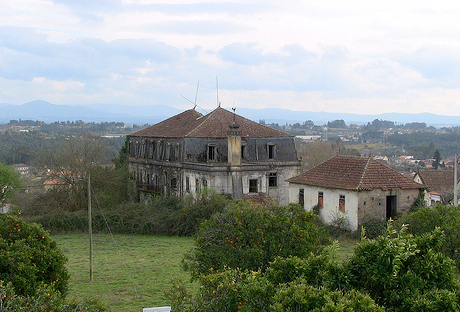MARRANOS AND THE INQUISITION
mlopesazevedo
New Christian-A Jew turned Christian (Catholic), whether voluntarily or forcibly, not necessarily a Marrano. Following the forced baptism of 1497 in Portugal, all Jews became known as New Christians, in contrast to Old Christians. Curiously, New Christians could never become Old Christians. The only way to become an Old Christian was to purchase a concocted family tree, which was a common practice. In some exceptional cases the king could proclaim New Christians Old Christians. New Christians were the primary target of the Iberian Inquisitions. After the introduction of the Inquisition in Portugal in 1536 New Christians were prohibited from entering certain professions and occupations such as medical doctor, boticary, military service, civil service, ship’s captain, Catholic religious orders, and many others.
Converso-The same as New Christian. The term is often used to describe former Jews in Spain. Sometimes it is erroneously used as a synonym for Marrano.
Marrano- A secret Jew or descendant thereof. Outwardly a practising New Christian Catholic, inwardly a secret Jew, often adhering to the essential tenets of Judaism such as dietary laws, funeral rituals, observance of high holidays, keeping the Sabbath, and fasting on Mondays and Thursdays. Understandably, circumcision was discontinued. The origin of the word is shrouded in mystery, although there is agreement that it was initially used in the pejorative sense of referring to swine. Today, due to the exigencies of political correctness its use is frowned upon. However, giants in the field such as Cecil Roth (History of the Marranos), Yosef Yerushalmi (From Spanish Court to Italian Ghetto), Yirmiyahu Yovel (Spinoza and Other Heretics, the Marrano of Reason) and Nathan Wachtel (La Foi du Souvenir-Labyrinthes Marranes), all use the term. It is also widely used in Portugal by lay persons and academics alike without any pejorative connotation.
The late professor Yerushalmi describes a Marrano as a potential Jew although professors Yovel and Wachtel distinguish Marranism as a separate “religiosity”, a set of common practices, although varied, by a people with a shared experience without a clearly defined theological doctrine. Marranism is characterized by secretiveness, ambiguity and fusion of Judaism and Christianity. For example, Marranos, even in the diaspora may venerate a “saint” or venerate a certain statue of “Our Lady” which to them represents Esther.
Amongst the intellectuals, Marranism may be defined by scepticism of both religions. Spinoza, born in Amsterdam of Marranos parents, (maternal line from Porto and Ponte de Lima in northern Portugal, paternal line from Vidigueira near Evora), is perhaps the best example. Although he was expelled from the Esnoga in Amsterdam at a young age, he did not become a Christian. Uriel Acosta, born on Rua de Sao Miguel in Porto of New Christian parents (Jews who had fled Spain in 1492), became a New Jew in Amsterdam but when he was expelled for the first time from the Esnoga he also did not revert to Christianity. Uriel was the first Marrano Jew to deny the individual immortality of the soul. Spinoza was the first to reject the divine origin of the bible and advocate separation of the state and religion.
Wachtel and Yovel attribute the rise of tolerance, freedom of thought, and the opening of the western mind to such descendants of Marranos as Michel Montaigne and Baruch Spinosa. Spinosa was only eight years old when Uriel shot himself in the head after being lashed 39 times in the Esnoga of Amsterdam. Uriel's books were burned and banned both by the Portuguese New Jews of Amsterdam and the civil authorities. Fortunately, due to the efforts of H.P. Solomon, a copy was discovered in the Royal Danish Library in 1989 which has now been published and translated into English. Acosta is often referred to as the world's first secular Jew.
Crypto-Jew-Same as a Marrano, a term favoured in the USA.
New Jew-A Marrano who has returned to normative Judaism such as Portuguese/Spanish communities in Amsterdam, Rotterdam, Harlem, Bordeaux, Hamburg, Livorno, Venice, Ferrara, Pisa, Ancona, Salonica, Constantinople, and later London, Manchester, New York, Charleston, Philadelphia, Savannah, Newport, Montreal, Recife, Curacao, Jamaica, and Suriname. The first six Jewish congregations in the USA and the first in Canada, England and Holland were formed by descendants of Marranos.
More recently, Marranos from Lisbon (Ohel Jacob synagogue) and Porto (Kadoorie/ Mekor Haim) attended Jewish rabbinical courts in London and Jerusalem to formally return to normative Judaism. Belmonte is perhaps the best know example of New Jews. However, both in Belmonte and Porto there are pockets of Marranos still operating clandestinely. In Porto a secret group of women still hold Sabbath services and observe the high holidays. It is a fallacy to assume that all Marranos want to return to normative Judaism. Some do, some do not. Some return via Orthodoxy, others not. As professor Wachtel notes, Marranism varies not only in practice but with individuals, place and epoch.
Anusim-Hebrew, plural of Anus/Anusah(female), meaning forced or coerced ones. In some circles, the preferred term to describe Marranos.
Auto da fé (auto de la fe in Spanish)
The solemn proclamation, usually in a public plaza or square, of the sentences of persons condemned by the Tribunal of the Inquisition. The solemn spectacle attracted thousands of spectators from all social classes, inclusive of royalty. A large platform hosted the high clergy and dignitaries. A sermon was preached against heresy after which sentences were pronounced of the condemned who were kneeling. Condemned persons reconciliated to the Church presented themselves at the public altar while those to be burned were turned over to civil justice officials. The auto sometimes lasted several days. The condemned paraded in long processions before the public. Public autos were abolished in the later phases of the Inquisition because of much foreign criticism.
It was an elaborate ceremony at which the sentences of the tribunal of the Unholy office were carried out. The location was usually announced two weeks before in order to construct platforms and scaffolding for the general public. Although a sombre affair for the penitents, a festive atmosphere prevailed, altars decorated, lengthy public sermons given by fiery orators attended by magistrates, civil servants, guards, armed soldiers, familiares (Inquisition informers/spies), bishops, monks, priests and the general public. On the day of the auto, a procession left from the Inquisition palace (the north side of the Rossio in Lisbon on the site of the current Dona Maria II national theatre), often early in the morning, winding its way through the city to the place where the sentences were to be pronounced.
The procession consisted of the penitents, in their sambenitos, wearing a conical hat, barefoot, lit candle in their hands, surrounded by two guards; behind them, the condemned to be “relaxed” (ie. (burned at the stake) accompanied by a priest ready to hear their confessions. The procession was followed by the familiares on horseback and dignitaries, including the Inquisitor General.
If the persons to be “relaxed” (ie. condemned to death) confessed and accepted Catholicism, they would be garrotted as an act of charity before being burned. If the condemned persisted in the belief of the law of Moses, they would be burned alive, or more accurately roasted because if there was little wind to whip the flames it took about two hours to die.
Effigies were burned of those who had fled the country or died in prison. Coffins with the bones of those that had been dug up after interment, such as the founder of tropical medicine, Dr. Garcia D'Orta and pioneer sugar plantation developer Branca Dias were also burned.
Not all autos da Fe were similar. In Coimbra for example, condemned persons were garrotted and tied inside a wooden hut on the bridge over the Mondego river. The huts were set on fire at midnight and thrown into the river. There were also some private autos, especially towards the end of the Inquisitorial regime.
Elias Lipiner, Terror e Linguagem, Um Dicionario da Santa Inquisiçaõ, Contexto, 1998, Lisboa
Antonio Borges Coelho, A Inquisicao em Evora, Lisboa, Caminho, 1987






